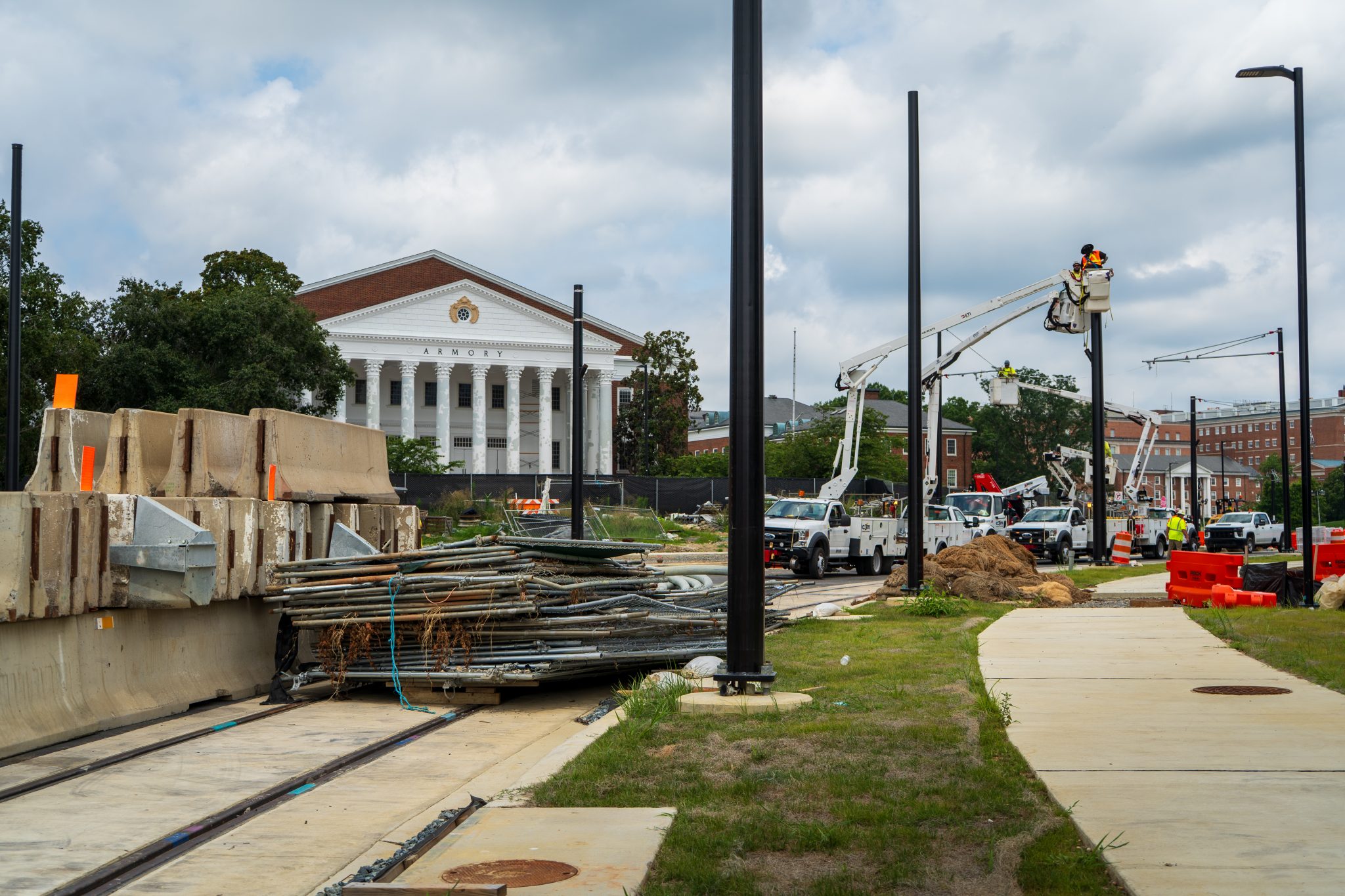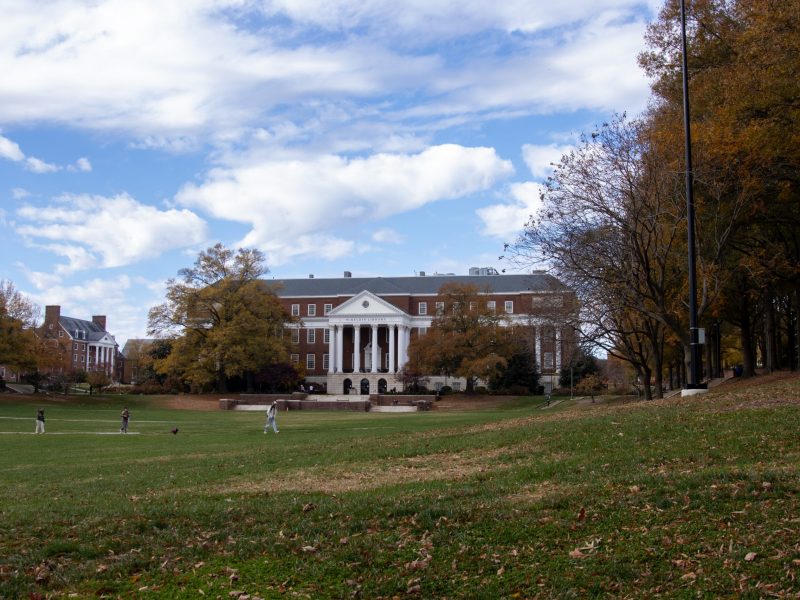Some University of Maryland students have voiced excitement and uncertainty about the scheduled testing of Purple Line light-rail vehicles on campus early next year.
This university’s chief administrative officer Charles Reuning announced last week that testing of the light-rail vehicles is set to begin on campus in early January. On-campus testing is set to be conducted on selected days from 10 p.m. to 5 a.m. The Purple Line is about 80 percent complete and set to begin operation in December 2027.
Freshman Jaden Cohen said it’s exciting to hear that the cars will actually start moving. But since the testing will be conducted at night, he is concerned some students may be unaware the testing is happening or try to disturb the cars.
“People don’t make smart decisions at night, and there’s no way to have a police presence across the whole line,” said Cohen, an accounting and supply chain major.
Cohen added he’s excited for the Purple Line to make it easier both to get around the area and to get to the Amtrak to return home to New Jersey.
Cohen’s also curious to see how students crossing Campus Drive during peak times will look like, he said. Cohen noted even buses are not able to get through the student’s foot traffic.
[College Park City Council asks state to evaluate site for affordable family, senior housing]
“I don’t know what’s gonna happen there. Is the train just gonna wait for students for an hour?” Cohen said.
Freshman digital art and media communications major Giulia Blough grew up in this area and frequently visited this campus since one of her parents worked at the university. She remembers seeing “significantly worse” construction around campus then.
Blough said she is curious if the testing of the Purple Line will actually happen as scheduled and how it will affect campus safety.
“I feel like I’ve been told so many times that ‘it’s almost done, it’s almost done’ and then it hasn’t been,” Blough said.
The Purple Line was set to open in 2022, but the construction process was paused for two years when Purple Line Transit Partners — the contractor overseeing the project’s construction — quit five years ago.
Five of the Purple Line’s 21 light-rail stations will be located on or near this campus. The line will also connect to the Metro’s red, green and orange lines.
Blough said that it will be interesting to see the light-rail vehicles coming through campus, considering all the people walking, riding scooters or driving cars. She added the Purple Line opening will make the journey home easier for students from nearby counties.
[Maryland sues Trump administration over blocking FBI headquarters move to Greenbelt]
“It’ll be nice for people that live in Montgomery County because they have a direct way of transportation home instead of having to order an Uber or take two different trains to get home on the Metro,” Blough said.
Applied economics graduate student Erik Lavoie said the Purple Line is a positive development but believes the project could have been designed better.
Lavoie said many students do not have access to a car and the Purple Line will be an alternative to spending money on Ubers. He added he’s concerned the Purple Line could get stuck at certain busy times in the day, just as he sees other vehicles get stuck on Campus Drive due to high pedestrian traffic.
“I’m just wondering if the people who planned [the Purple Line], are they fully aware of what it looks like around here at 11 a.m. when a lot of classes are out?” Lavoie said.



